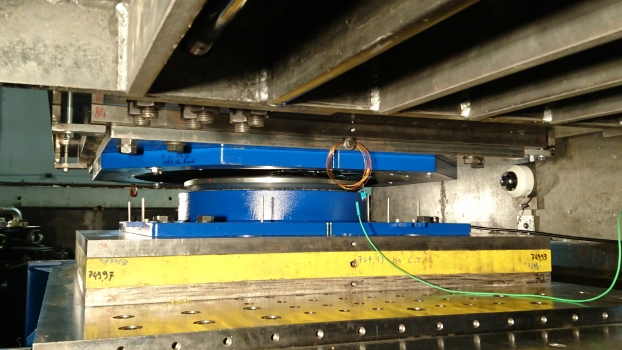Earthquake-Proof Pendulum Bearings for the Taro Bridge
For a new highway bridge near Parma, MAURER developed a tailor-made concept of pendulum bearings, lead rubber bearings, and modular expansion joints. The bearings transfer enormous vertical loads of up to 4,000 t, facilitate horizontal displacements in all directions, dissipate energies caused by earthquake and center the bridge after a seismic event. Even after a seismic event, the bearings and expansion joints remain fully functional.
The new expressway creates a connection from Nogarole Rocca (near Verona) to Fontevivo (near Parma) which spares the detour via Modena. The first section of 9.5 km is presently being built near Parma.
The challenge is a 2 km long bridge over the Taro river with various approaches. The entire structure has to be built earthquake proof. Moreover, the bridge is curved which creates complex displacements. To accommodate these displacements, MAURER designed already for the main bridge 92 tailor-made pendulum bearings as well as 6 modular joints.
Optimized Bearing Parameters
For this complex situation, MAURER executed the structural dynamic calculations and developed the concept for the seismic protection of the Taro Bridge. The bridge is split into two parts, and on each of the 21 axes and the two abutments, there are 4 bearings.
To cater for seismic protection, SIP type bearings (Sliding Isolation Pendulum) were installed. SIP bearings can be likened to all directional movable spherical sliding bearings, with the special that the main sliding face is now also curved. In the case of an earthquake, SIP bearings have the following 4 functions:
- The bearings transfer the vertical forces. The special feature of SIP bearings is that the effect of seismic isolation does not depend on the load of the structure, such that the structure can be optimally protected both for the fully loaded state and for the dead load.
- The sliding plate accommodates the horizontally acting seismic displacements and converts the motion energy by way of friction into heat.
- The bearings isolate the bridge from the substructure. By way of its inertia, the bridge will remain "calm" and will not encounter damages
- After the seismic event, the bearings ensure an automatic centering of the bridge into its original position (like a pendulum). This is especially important if a sequence of seismic events all act into the same direction.
Tests in Pavia and Bochum
The bearings have various diameters of up to 1,600 mm. According to Italian regulations, 20 % of these bearings have to be tested. These tests were carried out in the EUCENTRE (European Centre for Training and Research in Earthquake Engineering) in Pavia end of 2016 and in March 2017, and in the KIBKON in Bochum (Konstruktionsteilprüfung des Instituts für konstruktiven Ingenieurbau an der Ruhr-Universität).
Installation of these bearings is planned from March 2017 to mid of 2018.
Modular Expansion Joints
A further special are the modular expansion joints that accommodate the thermic and seismic displacements at the ends of the bridge. In service case, they have to cater for movements of up to ±280 mm. Moreover, they have to accommodate seismic displacements of up to ±450 mm, while remaining fully functional. A total of 6 modular expansion joints will be installed until March 2018. The 2 larger expansion joints with 8 seals will be placed in the center and connect the 2 parts of the split bridge.
The Taro main bridge is accessed by several approaches of a total of 14 smaller bridges. Also for these bridges, MAURER optimized the design and replaced the originally designed elastomeric bearings with lead rubber bearings. The lead in these bearings aids in dissipating energy in case of an earthquake. The approach bridges will be equipped with a total of 324 lead rubber bearings, 20 spherical bearings as well as 36 single seal and two seal expansion joints.
Structure Types
- About this
data sheet - Product-ID
7474 - Published on:
14/03/2017 - Last updated on:
19/05/2017


 MAURER SE
MAURER SE 